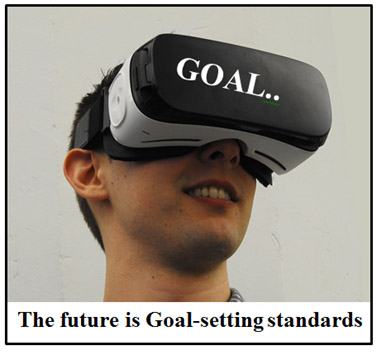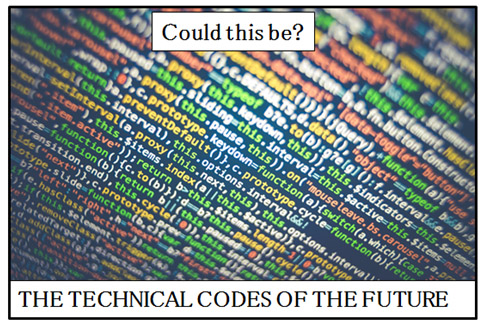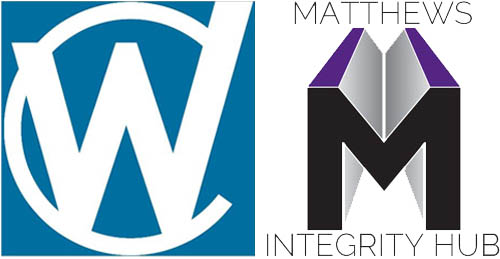CODES AND STANDARDS:
FUTUREWATCH: INDUSTRY 4.0
‘Everything that can be invented has already been invented’

Ah yes, the famous quote from more than 100 years ago from a Mr Charles Holland Duell, commissioner of the US patent laboratory, a fine fellow who, with the benefit of hindsight, didn’t have the first clue what he was talking about. You could roll his idea forward and make a similar statement about codes and standards in the mechanical engineering industry, predicting that they will remain in the same format into the future .We could anticipate the release of ASME VIII or EN13445 Yr 2050 or 2060 edition, similar to the current versions with perhaps a bit of tinkering around the edges to accommodate a few improved materials and welding techniques.
INDUSTRY 4.0 is the snappy little name given to the current trend of automation and data exchange in manufacturing technology. It includes cognitive computing, cyber-physical systems, cloud computing and the internet of things. It’s called 4.0 as it represents the fourth industrial revolution and characterised by rapid, exponential development speed.
THE PROBLEM, if it is one, is that the rate of change of technology is now speeding up so fast that the previous way that codes and standards have developed and are used today isn’t going to fit the world around them. Changes that took 20 years back in Mr Duell’s day now take one tenth of the time .It’ll soon be possible in one-hundredth of the time. The evolution gap will be a big as trying to use stone-age tools and horses and carts on current-day city streets.
Let’s take a little walk into the future. We need to take with us the codes and standards we have today so let’s see what we’ve got…..
Lagging and Leading standards
Moving targets are not nothing new in the world of industry and if you look carefully you can see evidence of the effect it has on technical standards by considering how it has produced leading and lagging standards.
In the world of static mechanical engineering equipment, standards tend to lead the technology. They are discussed then written by groups of experts from the industry and then construction practices in the industry follow them. In this world, standards and prescriptive and contain a fair representation of the state of the art in the industry; if you want to know how to make a pressure vessel, you can find out by reading the current code. Pressure vessels, welding, and low value steels follow this pattern. Technical targets move ponderously; marginal improvements are made year-on-year to address failures or problems that have occurred, but a pressure vessel today is much the same as one from 30 years ago.
In the world of rotating equipment, things are completely different. Standards tend to lag behind the technology as manufacturers continually rapidly develop and innovate to develop larger, smaller, lighter or higher performance machines than their competitors. Gas turbines, aircraft, motor vehicles, trains and propulsion systems develop like this. So do new technologies for robotics, power generation, weapons, farm machinery, consumer goods and similar. If it has moving parts, it develops at lightning speed. The result is that old-style prescriptive published codes and standards for these types of equipment do not represent anything like the state of the art of the technology. Manufacturers spend immense sums of money on development and so hold all the key information and, understandably, keep it to themselves.
Now expose them to the 4.0 rate of change
You won’t find many futurists sitting on technical code committees. They prefer the comfort of their past history and a slow rate of marginal change that makes them feel secure. They work on time-based procedures for collecting feedback from all their members, drafting and redrafting, followed by consultation and balloting before announcing the latest marginal changes with a flourish. Five years is not unusual for the complete process and many take longer. Innovative technological changes are notoriously difficult to get everyone’s agreement on so acceptance can lie dormant for a long time. Technology rapidly moves on leaving the standards lagging even further in its wake. If you combine this with a 4.0 rate of change then you may well conclude that, just like the dinosaurs, prescriptive construction codes and standards are heading for extinction. Mr Duell probably wouldn’t agree, but we already know about him.

Let’s change the system
There’s no need to, it’ll change itself if it wants to survive, as systems do. A system of thousands of prescriptive technical standards, advising individuals and groups precisely what to do will become obsolete and drift into one based on a much smaller family of Goal-Setting standards. Goal-setting standards set out the objectives to be achieved but give independence to the parties in how to achieve the goals. This makes them more immune to rapid technological changes and structural changes in the industries themselves; also a feature of the 4.0 environment.
It’s starting to happen already
Goal-setting is already used in regulations affecting the integrity industries that are statutory. The UK Offshore (safety case) Regulations work like this and most other HSE regulations are written in terms of objectives or goals to be achieved rather than specifying particular measures. You can also see it, in some parts of the Pressure Equipment Directive (PED) and other quasi-technical documents that include some prescriptive guidance but leave a lot to be decided by the duty-holder themselves. The commonly-seen term ‘treat on a case-by-case basis’ is little more than a bit of goal-setting in disguise.
In most technical standards however, the idea of prescriptive requirements remains the driving force and the forthcoming effect of an Industry 4.0 environment just about ignored. Looking forward to what the effects of trying to maintain prescriptive standards in a 4.0 environment might be, here are a few tell-tale clues that 4.0 is starting to catch us up;
- A standard becomes increasingly lagging; with outdated scope (because the boundaries are moving away too quickly to follow)
- The production and review process for updates starts to take longer, because the goal-posts are continually moving so things get shelved to ‘wait and see’
- A standard is still using outdated terminology and reads like a history book.
- Standards start to be amalgamated into sets ,becoming more general, or conversely, broken up into small parts to try to respond more quickly to specific industry changes
- Increased attempts at harmonisation of standards across different institutions. You have to wonder what the real driving force is behind this, when all participants are feeling similar stress from the emerging 4.0 rates of change
You can spot these general trends in several series of codes and standard. They don’t all come at the same time but the clues are there, if you look.

Into the future
None of these occurrences are necessarily a bad thing; they’re just indicators that 4.0 is on your tail. If you think they all sound a bit innocuous then here are a few of the next-stage developments that will follow, bringing changes at a more seismic level
- Construction codes and standards won’t be needed to tell people what to do because there won’t be any people involved. They’ll be telling the manufacturing machines what to do. ASME VIII will be a string of goal-setting machine code.
- Welding won’t be called welding; it’ll have some new name and be a 100% reliable process with fully automated robotic processes giving zero defects all the time. Hence all welding and NDE, codes, standards and personnel will be obsolete.
- Hydrocarbons are on their last waltz. Refinery and upstream oil standards won’t be needed when there are no offshore installations or refineries.
Sorry we can’t put an exact date on these…..Industry 5.0 might come along to mess up the time horizon. We’ll go for about 2060.
This article is the work of The INNOVATOR; Contributor to Matthews Integrity Hub: HEAD OFFICE.
Interested in how things might turn out in the future? See our linked article in NDE Office; The robots are coming.
Matthews Integrity Hub: HEAD OFFICE is OPEN EVERY DAY….0730 – 2200 Monday – Sunday…That’s correct, all week, every week, including holidays
 If we happen to miss your call, leave a message and we will call you back just as soon as we pick it up. Sorry, there’s no automated messages, call queueing, voice recognition tools or canned music. Try it and see.
If we happen to miss your call, leave a message and we will call you back just as soon as we pick it up. Sorry, there’s no automated messages, call queueing, voice recognition tools or canned music. Try it and see.
CONTACT US
Tel: 07746 771592 help@matthewsintegrity.co.uk





